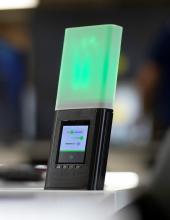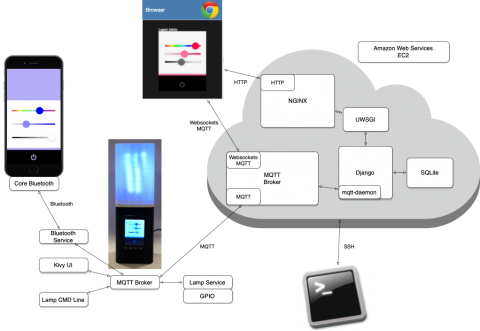Introduction to Connected Devices (ECSE377)
This course was developed to address a need in the undergraduate engineering and computer science curriculums to prepare students for building, deploying, and managing IoT products and services. Building IoT products requires connecting different platforms, often with a variety of technologies and programming languages, into a system. Both the variety of platforms and the “systems” nature of IoT make it particularly challenging for undergraduate students.
Undergraduates work in pairs to build a complete connected-device system: an embedded device with wireless networking, cloud and web, and mobile. The goal is to and then develop hands-on experience with systems-level aspects of the connected-device system, including analytics, remote firmware update, load testing, and essential security. Students learn about current architectures, languages, and technologies, such as Pub/Sub (MQTT), Python, Objective-C, Python Django, JavaScript, HTML/CSS, and Bluetooth Low Energy.
This offering was developed as a partnership between higher education and industry. Nick Barendt, CWRU alumnus and Executive Director of ISSACS, co-developed the class in 2015 in partnership with a team of expert developers and designers at LeanDog, Inc. a software consultancy. Mr. Nick Barendt presented a paper on the course at the American Society for Engineering Education (ASEE) Annual Conference in 2018.



